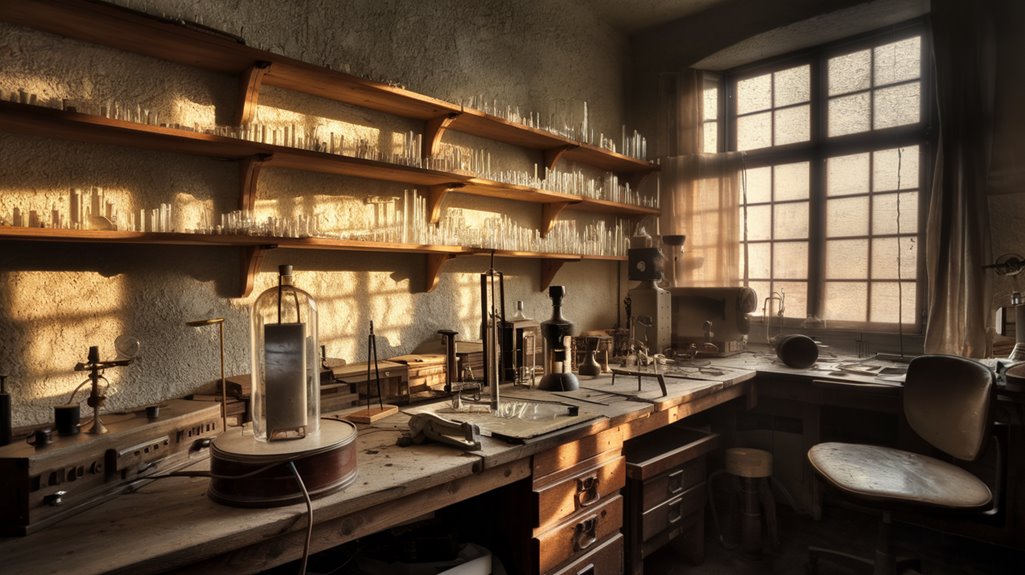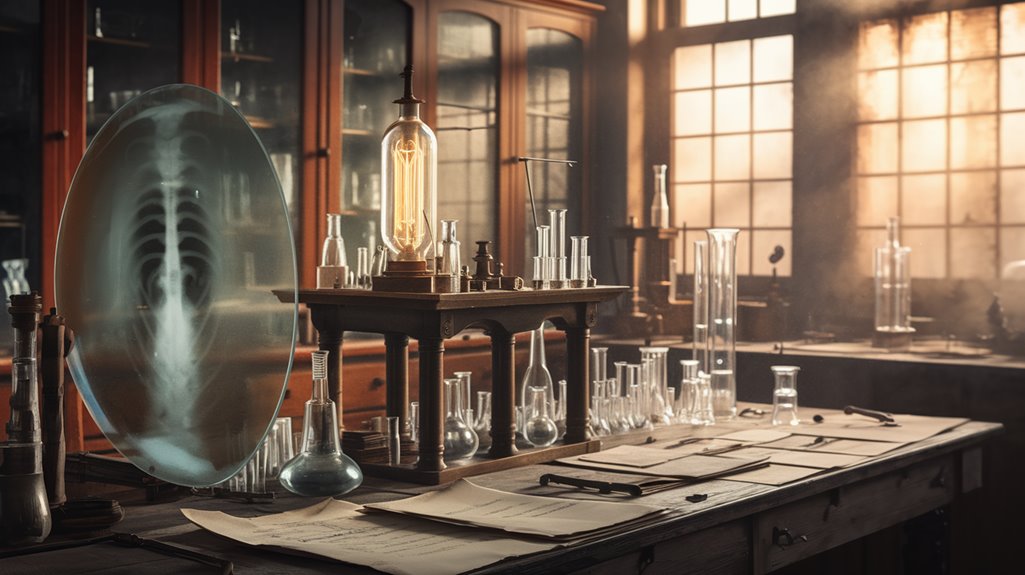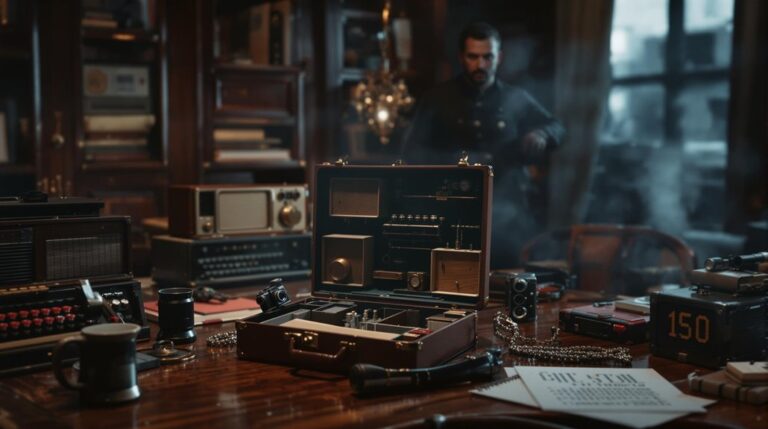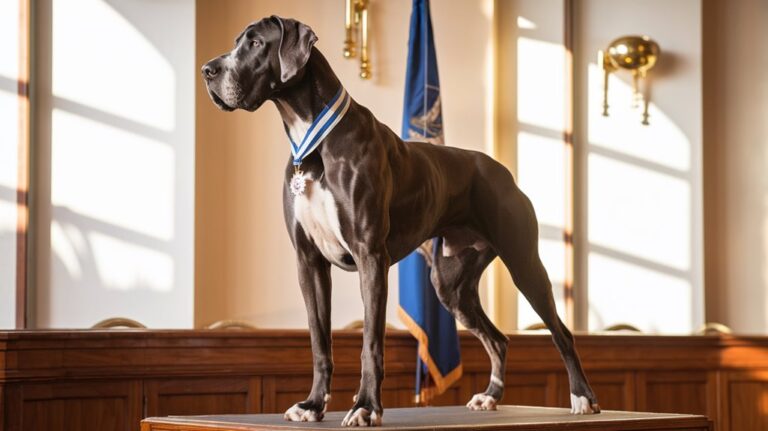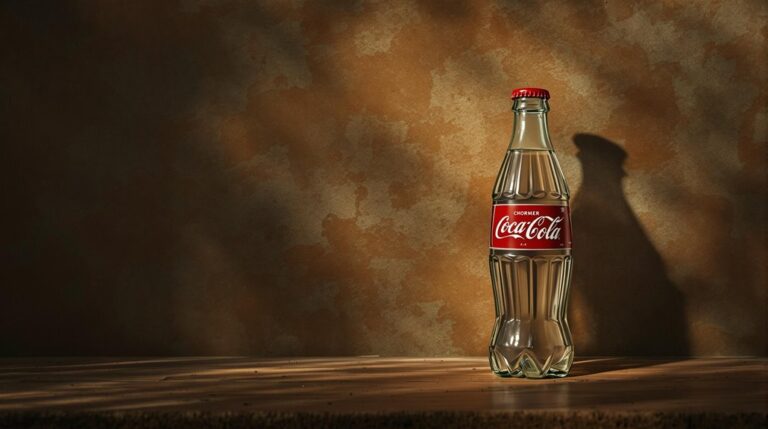The Accidental Discovery of X-Rays: Röntgen’s Breakthrough
Just as you might stumble upon something extraordinary while searching for something else, Wilhelm Röntgen wasn't looking to revolutionize medicine when he dimmed the lights in his lab that November evening in 1895. You've probably seen countless X-ray images in your lifetime, but the story behind their discovery isn't as straightforward as you'd think. It's a tale of curiosity, coincidence, and careful observation that changed our ability to see what lies beneath the surface – literally.
The Fateful Night in Wurzburg
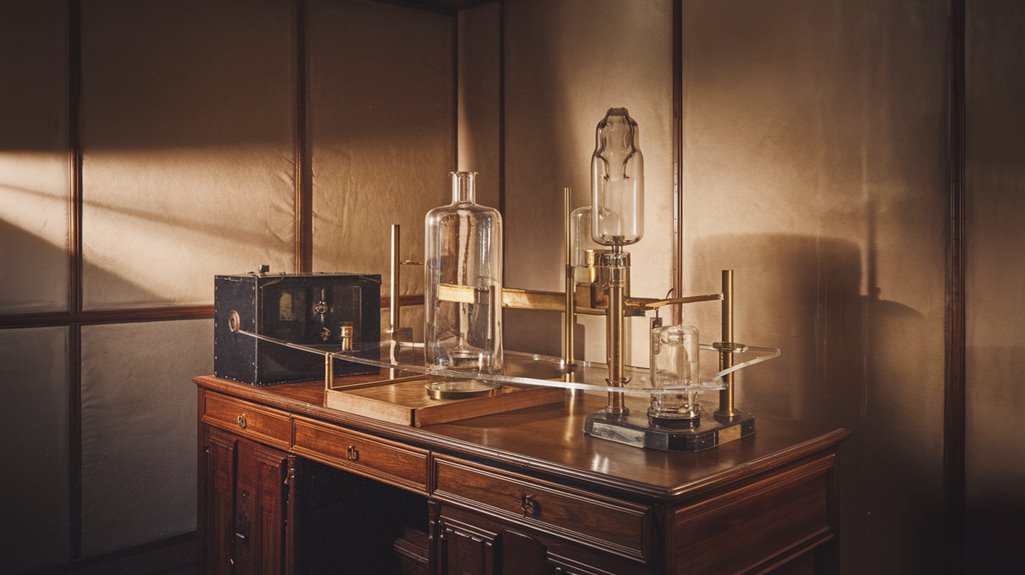
On a historic November evening in 1895, Wilhelm Conrad Röntgen made one of medicine's most significant breakthroughs at the Physical Institute of the University of Würzburg.
While testing electron beams in a Crookes tube, he noticed an unexpected glow on a fluorescent screen, even when shielded from ultraviolet light. This accidental discovery's significance would soon revolutionize medical diagnosis worldwide.
You can still visit the building where this historical context unfolded – it's now part of the University of Applied Sciences Würzburg-Schweinfurt on what was once Pleicherring road. The site now features experimental setup demonstrations that showcase how Röntgen made his remarkable discovery.
In 1909, they renamed it Röntgenring to honor the discovery.
The first validation of his discovery came when he produced his wife's hand image, revealing the bones beneath her flesh and her wedding ring. Seven weeks of intensive study followed Röntgen's initial observation, leading him to name these mysterious emissions "X-rays," with "X" representing their unknown nature.
Breaking Through the Darkness: The First X-Ray Experiments
While conducting his meticulous experiments with vacuum tubes, Röntgen's setup proved deceptively simple yet revolutionary. He'd covered a Hittorf-Crookes tube with cardboard to shield its aluminum window from the intense electric field generated by a Ruhmkorff coil.
During these cathode ray experiments, he noticed something extraordinary: a faint shimmer on a nearby bench.
The fluorescence observation wasn't just a one-time occurrence. With each discharge, the effect remained consistent, producing regular shadows that suggested the presence of an unknown type of radiation. Born in Lennep, Germany, Röntgen would go on to become one of the most influential scientists of his time.
Using photographic plates, Röntgen tested various materials, including books and metals, to understand these mysterious rays' permeability. His most famous test captured his wife's hand with a ring, creating the world's first radiographic image – a breakthrough that would transform medical science forever. His dedication to scientific accessibility was evident as he refused to patent X-rays, ensuring this groundbreaking discovery would benefit all of humanity.
The Race to Share the Discovery
Following his groundbreaking discovery, Röntgen moved swiftly to share his findings with the scientific world. He penned a concise 10-page article and sent it to the Würzburg Physical-Medical Society, along with nine photographs demonstrating X-rays' capabilities.
His strategic approach to scientific collaboration included sending twelve special envelopes to prominent scientists across Europe.
What started as a controlled scientific announcement quickly transformed through media influence when Die Presse published the news on January 5, 1896. The first medical application came shortly after when Frost brothers treated a young boy with X-rays.
You'll find it fascinating that within days, newspapers worldwide were reporting on X-rays' potential. Scientists rushed to replicate Röntgen's work, while the public's imagination ran wild with both excitement and concern.
This led to interesting developments, from legitimate medical applications to peculiar commercial responses like "X-ray proof underclothing." Despite the immense attention, Röntgen maintained his reluctant celebrity status and published only two additional papers on the subject.
From Laboratory to Medical Revolution
The scientific excitement surrounding Röntgen's discovery quickly transformed into a medical revolution. Within just one year, doctors were using X-rays to locate foreign objects, identify fractures, and detect kidney stones without invasive surgery.
You'll find it remarkable that by 1897, this medical innovation had already made its way to military battlefields, helping doctors treat wounded soldiers. Thomas Edison and Nikola Tesla reported severe burns and injuries from their early X-ray experiments.
Early pioneers like Otto Walkhoff and König helped establish dental radiography as a vital diagnostic tool in 1896. While early adoption was swift and enthusiastic, X-ray safety wasn't initially a priority. Doctors and technicians used the technology with little understanding of radiation risks. You can see this cavalier approach reflected in practices like shoe-store X-ray machines of the 1930s and 1940s.
However, as understanding grew, so did safety protocols. Today's medical imaging has evolved into a sophisticated field, with X-rays paving the way for advanced technologies like CT scans and MRI.
Wilhelm Röntgen: The Man Behind the Discovery
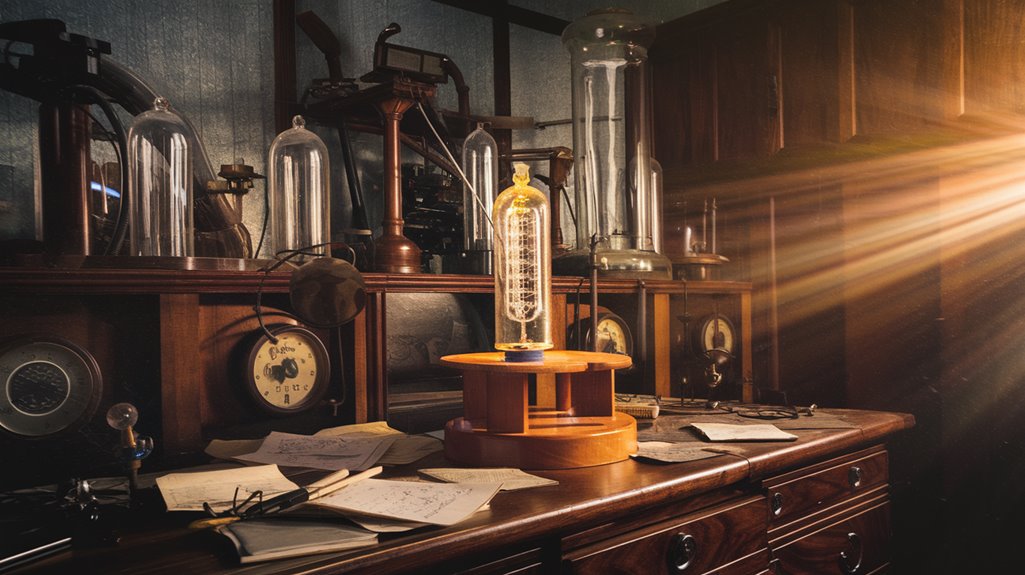
Brilliance often emerges from unexpected beginnings, as shown by Wilhelm Röntgen's journey from an expelled student to a Nobel Prize-winning physicist. Born in Germany but raised in the Netherlands, Röntgen's background wasn't typical of a future Nobel laureate.
Despite his early challenges, including being wrongly expelled from technical school, he refused to let setbacks define his path. In 1868, he took another significant step forward when he married Anna Bertha.
You'll find these fascinating traits shaped his success:
- A natural mechanical talent that enhanced his experimental precision
- A deep love for outdoor activities over traditional studying
- An unwavering determination that helped him overcome educational obstacles
Through sheer perseverance, he gained admission to the University of Zurich by examination, launching an academic career that would revolutionize both physics and medicine. His tremendous dedication led him to teach at prestigious institutions like Strasbourg University and Giessen.
His accidental discovery of X-rays in 1895 transformed medical diagnostics forever.
The Scientific Legacy and Modern Impact
Since their discovery in 1895, X-rays have sparked a revolution in medical imaging that continues to evolve today. You can trace their tremendous impact from the initial days when they were used rather carelessly in shoe stores to their current regulated applications in modern medicine.
The field of medical imaging has witnessed remarkable scientific advancements beyond X-rays. You'll find technologies like ultrasound, CT scans, MRI, and PET scans transforming how doctors diagnose and treat patients. Doctors worldwide were quick to embrace this technology, with global X-ray adoption occurring by the end of 1896. Major John Hall-Edwards demonstrated their surgical potential when he performed the first X-ray surgery in early 1896.
While early practitioners didn't fully understand radiation risks, today's protocols guarantee your safety through careful regulation and minimal exposure.
X-rays remain fundamental to medicine, but they've also paved the way for radiation-free alternatives. When you visit a hospital now, you'll benefit from over a century of innovation that started with Röntgen's accidental discovery.

